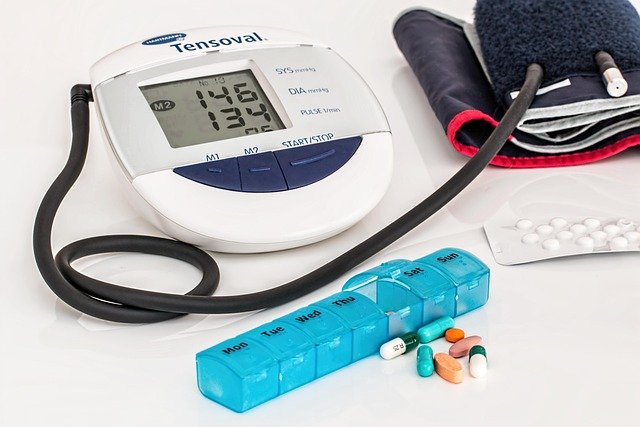Early signs of congestive heart failure: a clear, neutral guide
Congestive heart failure (CHF) occurs when the heart cannot pump blood efficiently enough to meet the body's needs. Recognizing the early signs of heart failure can lead to earlier intervention and improved outcomes. This condition develops gradually, often allowing time for detection before symptoms become severe. Understanding what to watch for and when to seek medical attention empowers individuals to take control of their cardiovascular health and address potential issues promptly.

Early symptoms of congestive heart failure
The initial signs of congestive heart failure may be subtle and easily attributed to aging or other conditions. Shortness of breath, particularly during physical activity or when lying flat, is often one of the first noticeable symptoms. This occurs because fluid accumulates in the lungs when the heart cannot efficiently pump blood. Ankle swelling, especially in the evening or after standing for extended periods, results from fluid retention as the heart struggles to maintain normal circulation.
Fatigue and weakness are common early indicators that the heart is not delivering sufficient oxygen to muscles and tissues. Many people notice reduced exercise tolerance, finding themselves unable to perform physical activities they once completed with ease. Another concerning sign is rapid weight gain—gaining 2-3 pounds (0.9-1.4 kg) over a few days may indicate fluid retention related to heart failure, rather than increased body fat.
Patterns to watch in daily life
Certain symptom patterns can provide important clues about developing heart failure. Nightly breathlessness, including waking up feeling short of breath, may indicate fluid accumulation in the lungs when lying flat. This condition, called paroxysmal nocturnal dyspnea, often improves when sitting upright or standing. A persistent cough, especially one that produces frothy or blood-tinged sputum, may signal fluid buildup in the lungs.
Physical changes like tighter shoes or rings suggest fluid retention and edema. Monitoring these patterns alongside other fluid retention trends, such as swelling that improves overnight but returns during the day, can help identify potential heart failure. Implementing daily weight checks using a consistent schedule (morning, after using the bathroom, before eating) can detect concerning trends—a gain of 1-2 kg (2-4 pounds) over 1-2 days often indicates fluid retention rather than true weight gain.
Risk factors and causes of congestive heart failure
Understanding risk factors helps identify those who should be particularly vigilant about potential heart failure symptoms. High blood pressure is a leading cause, as it forces the heart to work harder against increased resistance in the blood vessels. Over time, this extra workload can weaken the heart muscle. Coronary artery disease, which reduces blood flow to the heart muscle itself, accounts for many heart failure cases by causing damage from inadequate oxygen supply.
Diabetes increases heart failure risk by damaging blood vessels and often coinciding with other risk factors like hypertension and obesity. Valve disease, whether congenital or acquired, can disrupt normal blood flow through the heart chambers, eventually leading to heart failure. Age-related changes to cardiac structure and function make heart failure more common in older adults, with prevalence increasing significantly after age 65.
How congestive heart failure is evaluated
When heart failure is suspected, healthcare providers employ several diagnostic approaches. The clinical exam focuses on identifying fluid retention signs, abnormal heart sounds, and lung sounds indicating congestion. The physical examination often reveals important clues such as elevated jugular venous pressure, leg edema, or an enlarged liver.
Echocardiogram (cardiac ultrasound) provides crucial information about heart structure and function, including ejection fraction—the percentage of blood ejected from the heart with each contraction. Blood tests for BNP/NT-proBNP (B-type natriuretic peptide) measure a hormone produced when the heart is under strain, helping distinguish between heart failure and other conditions causing similar symptoms. Additional imaging such as chest X-rays can detect lung congestion, while cardiac MRI provides detailed heart muscle assessment.
A professional evaluation is appropriate when experiencing new or worsening shortness of breath, unexplained fatigue, persistent coughing, rapid weight gain, or increased swelling. Symptoms that disrupt sleep or significantly limit daily activities warrant prompt medical attention.
Day-to-day management basics for heart health
Whether diagnosed with heart failure or working to prevent it, several management strategies can help. Sodium awareness is essential, as excessive salt intake promotes fluid retention. Learning to read food labels, avoiding processed foods, and using herbs and spices instead of salt for flavoring can help maintain recommended sodium limits.
Maintaining proper fluid balance requires careful monitoring of intake. For those with heart failure, healthcare providers often recommend specific daily fluid limits and strategies for tracking consumption. Activity pacing—alternating periods of activity with rest—helps prevent overexertion while maintaining physical conditioning, which is beneficial for heart health.
Medication adherence plays a crucial role in heart failure management. Taking prescribed medications at consistent times and understanding their purpose improves effectiveness and reduces complications. Regular follow-up planning with healthcare providers ensures appropriate monitoring of symptoms, medication effectiveness, and disease progression, allowing for timely adjustments to the treatment plan.
Conclusion
Recognizing the early signs of congestive heart failure provides an opportunity for earlier intervention and improved outcomes. By understanding symptoms like shortness of breath, ankle swelling, and fatigue, individuals can seek appropriate medical care before the condition progresses. Monitoring patterns such as nightly breathlessness and implementing daily weight checks creates awareness of potential heart issues. With proper evaluation and day-to-day management strategies, those at risk or living with heart failure can take meaningful steps toward better cardiovascular health.
This article is for informational purposes only and should not be considered medical advice. Please consult a qualified healthcare professional for personalized guidance and treatment.




